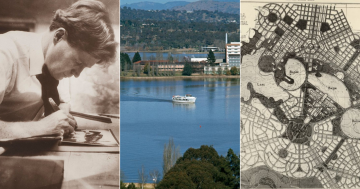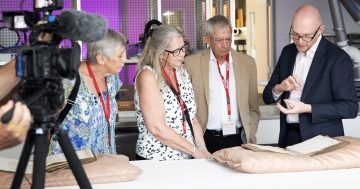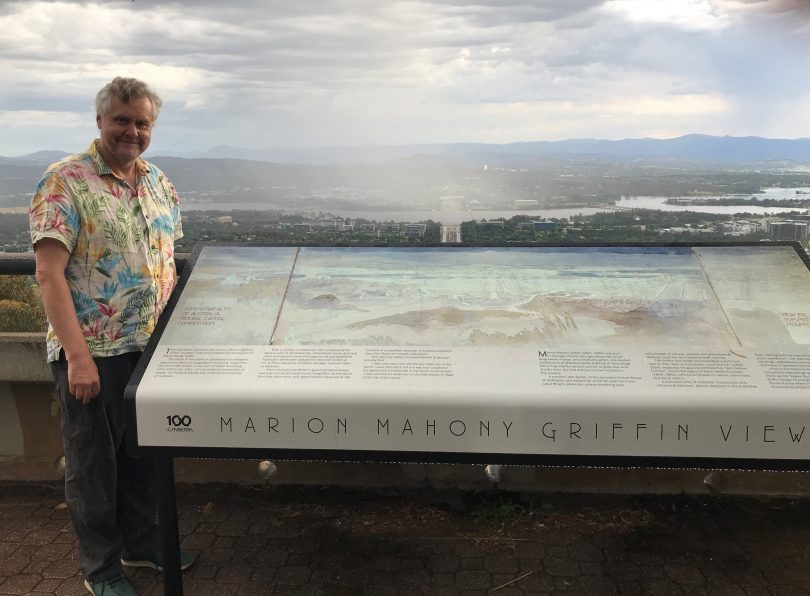
Ian Batterham at Mount Ainslie lookout, a view that Marion Mahony Griffin was able to imagine without having seen it. Photo: Elizabeth Masters.
Ian Batterham has saved so much of Australia’s heritage from oblivion, he could well be classed as a national treasure.
But his talents extend beyond his career in conservation to a love of music and songwriting, which led to his creation of musical Camelia, the tragic story of a young actress who became mistress of King Farouk of Egypt.
On leaving school, Ian was torn in two directions.
“I was interested in artefacts and it was a toss up between archaeology and conservation,” he says.
A new Canberra course in scientific conservation of historic items won the day, and as one of its first graduates, Ian was snapped up by the National Archives of Australia.
He is widely recognised for his work in rescuing Marion Mahony Griffin’s paintings, which her husband, Walter Burley Griffin, submitted with his design for the Canberra competition.
When Ian first saw the artworks, stored in a tin shed beside the lake, he was appalled.
“It was a time when people weren’t interested in Burley Griffin and they were stacked one on top of the other, getting scuffed,” he says.
“They had been poorly treated by an external conservator decades earlier, pasted onto chipboard, with their borders sliced off.”
Fortunately for Canberra, Ian used his skills to restore the paintings to their original beauty.
“For me, they were always the first in line for treatment,” he says. “Marion was brilliant.”

Marion Mahony Griffin’s artwork, View From Summit of Mount Ainslie, which will be on display at the National Archives of Australia in February. Image: National Archives of Australia.
Ian believes Marion’s artworks played a key role in the design winning the competition.
“There’s a beauty about them,” he says. “I’m always impressed she could visualise that whole vista from Mount Ainslie without having seen it.”
In his role of checking historic documents for damage, Ian also discovered the grisly fate of the Bounty mutineers who settled on Pitcairn Island in 1790.
When their descendants were moved to Norfolk Island in 1856, a minister collected their history to begin a ledger of births, deaths and marriages.
Ian detailed the story of the nine mutineers and their Tahitian women and male servants – 28 in all – who had settled Pitcairn. It wasn’t pretty reading.
“I grew up with the movie starring Marlon Brando [Mutiny on the Bounty] and imagined the mutineers living in paradise,” he says. “But the reality was horrendous – a nightmare.”
The story includes murder, suicide, conspiracy, butchery and madness caused by toxic liquor. One mutineer had his brains bashed out with a rock. Another, in a fit of delirium, “tied a stone to his neck, threw himself into the sea and was drowned”.
After leaving the National Archives of Australia, Ian was invited to lecture in conservation studies at the University of Canberra. It was a natural progression after a career of mentoring young conservators.
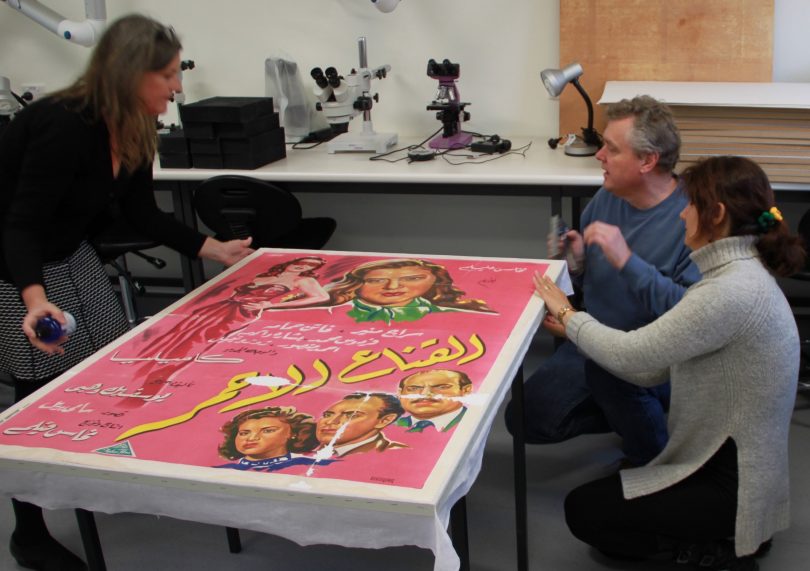
Ian Batterham and University of Canberra students working to conserve a poster from one of Camelia’s films. Photo: Supplied by Ian Batterham.
And his passion for songwriting continues.
“I’ve always loved music,” says Ian. “I was in four different rock bands when younger and I wrote songs for them all. It was great fun.”
He later wrote a song cycle, The Four Canberra Seasons, for a local choir. But perhaps his most ambitious achievement was creating the musical based on Camelia’s short and tragic life.
“Even in primary school I was fascinated by ancient Egypt,” says Ian. “When I travelled there in 1982 I became interested in the modern country and especially King Farouk.
“I read about Camelia, who was born in Alexandria and, at 16, was discovered by an impresario while waitressing in a coffee shop. He was a complete rotter, but he took her to Cairo where she met King Farouk.”
The royal affair continued on and off, and Camelia bore the king a son who was never acknowledged. She died in a plane crash in 1950. Opinions vary as to whether she was 21 or 31, but Ian goes with the 21 etched on her gravestone.
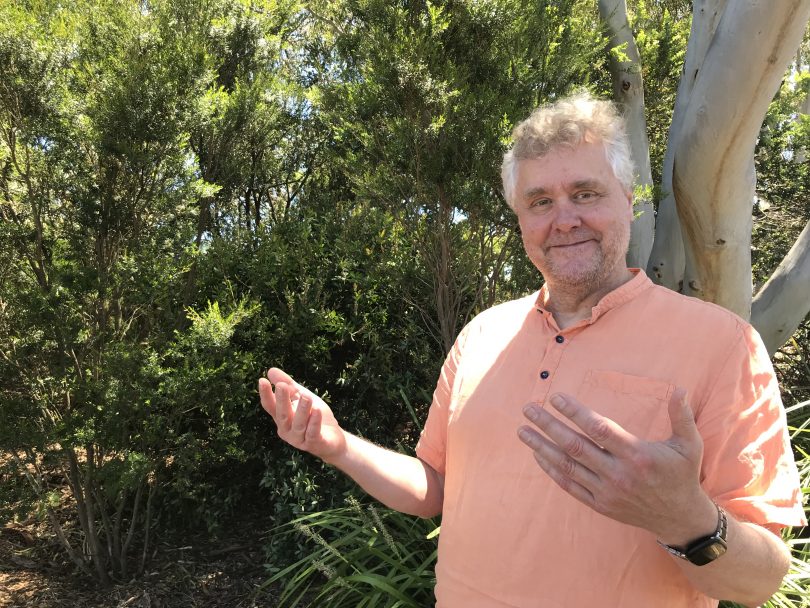
Ian Batterham regularly climbs Mount Ainslie. Photo: Elizabeth Masters.
“I thought, ‘Wow, this is a great story,’” says Ian. “She squeezed a lot into her short life. She made 15 or so movies, had an affair with a king and gave birth to a baby.”
The fate of that baby is part of the musical, Camelia, “a big production” that Ian is working to get off the ground.
“It’s hard work, but I think it’s a story that deserves to be told,” he says.
Ian is also collecting items connected with Camelia, including posters for her films. He and his University of Canberra students have recently worked to conserve a badly damaged poster for The Red Mask.
And the future? With continuing to lecture, preserve Camelia’s heritage and striving to get his musical staged, Ian says he’s busy but “it’s good busy”. And that’s good news for Australia.
The National Archives of Australia and the National Library both have events to mark Marion Mahony Griffin’s achievements in February 2022.
Disclosure: Elizabeth Masters and Ian Batterham co-wrote a book for the National Archives of Australia in 2010: Keeping Family Treasures, which is now out of print.













